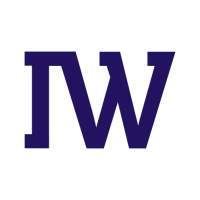
AI can spot patterns in data and make predictions, and the hope is these tools could identify drug prospects to test on humans within months.
It started in a “wet market” where animals are for sale and slaughtered. Somehow a virus was unleashed that spread to humans, likely originating in bats. Only a few cases at first, then more. Several brave souls tried to sound the alarm but were silenced by authorities fearing dissent and social chaos.
Those officials didn’t take it seriously, didn’t alert higher ups. As more and more cases piled up, the virus spread quickly beyond the city. By then it was impossible for the authorities to ignore, too late to contain COVID-19. Officially this is known as “severe acute respiratory syndrome coronavirus 2”, or SARS-CoV-2, because it is related to the virus that caused the SARS outbreak in 2003.
This sounds like the setup for so many heretofore fictional stories: Andromeda Strain, Twelve Monkeys, Outbreak and Contagion spring to mind. With the virus spreading around the globe we are now starring in our very own dystopian drama — one with an uncertain ending. After all, we’re likely only in the second chapter of this drama. Perhaps science and technology can find a solution. Our society has a strong belief that we can engineer our way out of difficult challenges. Surely AI, for all it’s recent applications in healthcare, can address a new virus.
There are hundreds of startup companies who have deployed AI tools over the last several years to speed drug discovery. Yet, only one drug developed using AI has reached clinical trial with humans, and this only recently, to treat patients with obsessive-compulsive disorder. In this instance, AI was able to complete in 12 months what often takes years — reaching human trials, not public use. Once a company has a promising compound, the clinical trial process starts. There are four phases in the US, and new medications have to complete each phase successfully to win FDA approval. Conceivably the phases could be fast-tracked for a promising treatment or vaccine.
While it appears to be similar in DNA structure to SARS, COVID-19 presents a potentially problematic challenge for AI as it is “novel” – and therefore largely unknown. AI requires extensive data to be effective. Even for symptom checking machine learning algorithms it could be 6 to 12 months before there is enough peer-reviewed scientific literature to help inform the design.
For those who are sick enough to need a CT scan, AI is helping to speed Coronavirus diagnosis, reducing the time from five minutes to 20 seconds. And AI-assisted drones are being used in China to spray disinfectant in public places and sense each person in a crowd through high-accuracy infrared for temperature assessment. This has been widely used in crowded areas to assist in “onsite management.” Small comfort that.
AI is faster but still takes time
AI can spot patterns in data and make predictions, and the hope is these tools could identify drug prospects to test on humans within months. As coronaviruses such as COVID-19 mutate, a drug candidate will have to be effective against a broad spectrum of possible forms. Work is now underway worldwide, from Hong Kong to Israel and the US, to use AI in pursuit of a vaccine. Insilico Medicine Inc., Iktos, Vir Biotechnology Inc., Moderna Therapeutics and Atomwise are among the companies employing AI to discover potential coronavirus medicines. Estimates vary, with the consensus saying it will take at least a year, possibly longer, to develop an effective vaccine and bring it to market.
Traditionally, a team of scientists conducts hundreds or thousands of experiments testing chemical reactions over years of effort to develop a new drug. This is a rigorous process that often requires billions of dollars of investment before success or failure is determined. That’s just to identify a promising drug candidate, before clinical trials begin.
AI is increasingly being used for the initial identification of potential molecular compounds. Atomwise uses convolutional neural networks that find patterns in test data that people would never be able to see. The technology can analyze billions of compounds to identify a small but promising subset for in-depth testing, compressing years of research into weeks. Other methods are also being pursued for COVID-19 vaccine development. Iktos uses deep generative neural networks to accelerate the drug discovery process through the automatic design of virtual molecules with the required characteristics of a new drug candidate.
A vaccine sooner than later?
While AI will undoubtedly speed up vaccine development, the technologies rely on large quantities of accurate training data. A new, highly infectious disease for which there is limited data poses challenges for even the more sophisticated AI techniques.
Scientists in the US attempted several years ago to obtain funding to develop a SARS vaccine but were unsuccessful in attracting interest. Efforts were placed on hold, saved in a freezer. Had the project been funded, and because of the similarity to COVID-19, tests could already be underway in China and elsewhere to determine efficacy for the new virus. Clearly, an opportunity missed.
Moderna Therapeutics also uses AI to accelerate the learning cycle drastically, providing critical insights into research and production data that were otherwise inaccessible and unachievable. However, the company is notoriously secretive on their specific methods. Moderna has apparently jumped ahead of other vaccine development efforts, with a pre-clinical trial expected to start by late April in Seattle. This trial will include 20 to 25 healthy volunteers to determine if the vaccine induces an immune response likely to protect against infection. The effectiveness would still need to be tested in subsequent trials with larger groups of people before approval and distribution. Even if proven effective, the vaccine might not be widely available until next year.
Nevertheless, an Israeli research institute is claiming they could have a vaccine within a few weeks and available in 90 days. The institute had developed a vaccine over the last four years for bronchial disease affecting poultry. Fortuitously, they had used a coronavirus as a proof of concept model for their technology. Like SARS, they believe the DNA sequence of their model is like COVID-19 and that this increases the likelihood of achieving an effective human vaccine in a very short timeframe, possibly several months.
Despite missed opportunities and the challenges of incomplete data, we might get lucky. After all, luck is how Penicillin was discovered, so perhaps lightening will strike twice in the same way and there will be a happy ending to our dystopian drama.
Gary Grossman is Senior Vice President and Technology Practice Lead, Edelman AI Center of Excellence.
The InformationWeek community brings together IT practitioners and industry experts with IT advice, education, and opinions. We strive to highlight technology executives and subject matter experts and use their knowledge and experiences to help our audience of IT … View Full Bio
More Insights


Leave a Reply